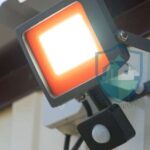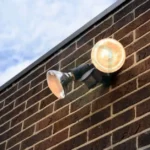Table of Contents
Do you want to know what motion sensors work with Alexa? Yes, as a Homeowner, I must choose a motion sensor with Alexa.
It is crucial to consider compatibility, reliability, and price factors.
I stood in my living room, staring at the sleek, voice-activated device on the coffee table. Alexa, my faithful virtual assistant, had become integral to my daily routine.
With her assistance, I could control the lights, play music, and even order groceries with a simple command.
However, one question lingered in my mind: What motion sensors would work with Alexa?
My curiosity sparked, and I embarked on a quest to find the perfect motion sensors to enhance my intelligent home experience.
I scoured the internet, reading reviews and researching various brands.
Let me show you how I find some suitable and valuable ones.
Let’s dive in.
What is Motion Sensor?
Motion sensors are a popular choice for homeowners looking to enhance the security and automation of their homes.
With the rise of innovative home technology, many people are now integrating motion sensors into their Alexa-enabled devices to create a more seamless and convenient living experience.
How Do Motion Sensors Work?
Before diving into the specifics of motion sensors that work with Alexa, let’s first understand how these devices operate.
Motion sensors work based on various technologies, including infrared (IR), ultrasonic, and microwave.
Each technology has strengths and applications, but the basic principle remains: detecting motion within a defined range.
Once the sensor detects movement, it will send a signal to a connected device or hub, initiating the desired action.
For example, a motion sensor connected to your bright lights can detect when someone enters a room and automatically turn on the lights.
These devices provide convenience and help save energy by ensuring that lights are only activated when necessary.
What Motion Sensors Work with Alexa?
Alexa, the virtual assistant developed by Amazon, has become a popular choice for controlling smart home devices.
Alexa seamlessly integrates with various smart devices and has a wide range of capabilities, making it an excellent choice for voice control in your home automation system.
Choosing motion sensors compatible with this platform is essential to make the most of Alexa’s features.
Here are some popular motion sensors that work with Alexa:
1. Ring Alarm Motion Detector
The Ring Alarm Motion Detector is a versatile and reliable option for integrating motion sensing into your smart home.

The sensor has been crafted to function smoothly with the Ring Alarm system, and It is possible to control through voice commands using Alexa.
The Ring Alarm Motion Detector offers enhanced security and automation capabilities with adjustable sensitivity settings and a wide detection range.
Features:
- Slim profile with a button and indicator light.
- Can be mounted on a flat surface or in a corner.
- Motion detection capability.
- Part of the Ring Alarm system, which includes a base station, keypad, contact sensors, and more.
Pros:
- Easy setup.
- Reliable motion detection.
- Affordable pricing.
- Optional professional monitoring available.
- Integration with other Ring devices and the Ring app.
- Local storage for cameras.
Cons:
- Limited equipment options compared to other security systems.
- Lacks monitored smoke alarms and gas detectors.
- Limited smart home integration and automation capabilities.
- Some features may require a higher-end subscription.
- Connectivity issues reported.
2. Philips Hue Motion Sensor
If you have Philips Hue intelligent lights installed in your home, the Philips Hue Motion Sensor is perfect for complementing your setup.
This motion sensor not only detects movement but also has an ambient light sensor, allowing it to adjust the brightness of your Philips Hue lights based on the surrounding conditions.

Connecting the Philips Hue Motion Sensor to your Alexa-enabled device will enable you to control your lights using voice commands effortlessly.
Features:
- Automatically turns on Philips Hue smart lights when motion is detected.Designed for indoor use.
- Can be integrated with the Philips Hue Bridge for advanced control and automation.
- Battery-powered with a long operating time (up to two years).
- Easy to mount and configure.
- Wireless connectivity.
Pros:
- Seamless integration with the Philips Hue ecosystem.
- Enhances convenience and energy efficiency by automatically turning on lights when needed.
- Can be programmed for specific hours of operation.
- Sensitive motion detection that triggers lights quickly.
- Easy setup and installation.
Cons:
- Designed for indoor use only.
- Limited control options compared to more advanced motion sensors.
- Requires a Philips Hue Bridge for full functionality.
- Some users reported difficulty accessing the battery compartment.
- App limitations, such as controlling lights in a maximum of three “rooms”.
3. Wyze Sense Motion Sensor
The Wyze Sense Motion Sensor is a budget-friendly option with Alexa. With its compact design and wireless connectivity, you can easily install this motion sensor in different areas of your home.
Connecting the Wyze Sense Motion Sensor to Alexa allows you to create customized routines and automation scenarios, such as turning on specific lights when motion has been detected in a particular area.
Features:
- The Wyze Sense starter kit includes one motion sensor and a pair of contact sensors.
- The motion sensor uses passive infrared light to detect radiant heat and can detect motion up to 25 feet away with a 120-degree field of view.
- The motion sensor is designed to detect people, not pets, and has adjustable sensitivity settings.
- The Wyze Sense system requires a Sense Bridge to connect to Wi-Fi.
- The Wyze app is used to control all Wyze equipment, including the motion sensor.
Pros:
- Affordable pricing for the starter kit and additional sensors.
- Easy to install and use.
- Reliable motion detection with a wide field of view.
- Adjustable sensitivity settings and alternative “large pet installation” instructions.
- Integration with the Wyze app and other Wyze devices.
Cons:
- Limited smart home integration and automation capabilities.
- Designed for indoor use only[.
- No cellular backup or third-party smart home compatibility.
- Some users reported difficulty accessing the battery compartment.
4. Ecolink Z-Wave Plus Motion Detector
The Ecolink Z-Wave Plus Motion Detector is a versatile option compatible with many Z-Wave intelligent home systems, including those that work with Alexa.
This motion sensor offers reliable motion detection capabilities with its 360-degree detection range and adjustable sensitivity settings.
By integrating the Ecolink Z-Wave Plus Motion Detector with Alexa, you can control your lights and other connected devices, such as thermostats and door locks.
Features:
- Z-Wave Plus technology for reliable wireless communication.
- Passive Infrared (PIR) motion detection.
- Pet immunity feature to prevent false alarms from small pets.
- Wide-angle motion protection with a maximum range of up to 30 feet.
- Adjustable sensitivity and configuration options.
Pros:
- Quick and accurate motion detection.
- Easy installation and setup.
- Compatible with Z-Wave smart home systems.
- Pet immunity feature reduces false alarms caused by pets.
- Wide-angle coverage for comprehensive motion detection.
Cons:
- Designed for indoor use only.
- Limited availability of advanced features compared to other motion sensors.
- Some users find the size of the sensor to be large and bulky.
Can I use multiple motion sensors with Alexa?
Yes, you can use multiple motion sensors with Alexa. You can create a comprehensive security and automation system by strategically placing motion sensors throughout your home.
You can customize routines and automation scenarios triggered by specific motion sensor events with Alexa.
How do I connect motion sensors to Alexa?
To connect motion sensors to Alexa, you must ensure that your chosen motion sensor is compatible with Alexa.
Once you have the compatible motion sensor, you can join it to Alexa through the respective intelligent home hub or device manufacturer’s app.
Follow the manufacturer’s instructions to enable the skill or integration and link the motion sensor to your Alexa account.
Can Alexa send Notifications when Motion is Detected?
Yes, Alexa can send notifications when motion is detected, but it depends on the specific motion sensor and the integration capabilities it offers.
Some motion sensors have built-in notification features that can be configured through their respective apps, while others rely on Alexa routines to trigger notifications.
Check the features and capabilities of the motion sensor you choose to determine if it supports messages with Alexa.
Are there any outdoor motion sensors that work with Alexa?
Yes, there are outdoor motion sensors that work with Alexa. Many manufacturers offer motion sensors specifically designed for outdoor use.
These sensors are weatherproof and can withstand various environmental conditions.
When choosing an outdoor motion sensor, ensure it is compatible with Alexa and meets your specific outdoor security and automation requirements.
Can I Control the Sensitivity of Motion Sensors Connected to Alexa?
Yes, you can usually control the sensitivity of motion sensors connected to Alexa.
Most motion sensors offer adjustable sensitivity settings, allowing you to fine-tune the detection range and avoid false alarms.
Check the specifications and features of the motion sensor you choose to determine if it offers adjustable sensitivity settings and how to configure them.
What are the Advantages of Using Motion Sensors with Alexa?
Using motion sensors with Alexa offers several advantages:
- It enhances the security of your home by alerting you to any detected motion.
- It provides convenience by automating various tasks based on motion detection, such as turning on lights or adjusting thermostats.
- It offers a hands-free control experience through voice commands, allowing you to control your smart home devices without interacting physically.
Conclusion
Now that you have learned and explored what motion sensors work with Alexa provide a comprehensive guide to help you make an informed decision.
Always remember to choose a suitable motion sensor and integrate it with Alexa to create a seamless and convenient living experience.
Whether you’re looking for indoor or outdoor motion sensors, various options offer compatibility with Alexa.
Consider your needs and requirements to find the motion sensor that best suits your home automation system.
With motion sensors and Alexa, you can take your smart home to the next level of efficiency and convenience.
I got an exciting article on how to clean motion sensor light. Check it Out.




